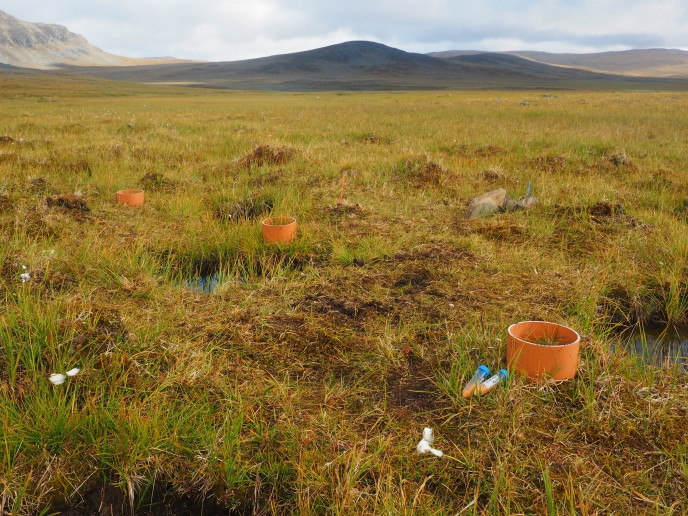Impact of climate change-induced permafrost thaw on Arctic ecosystems
Permafrost soils contain around twice the amount of carbon (C) currently in the atmosphere and 50 % of the world's C pool. Together with the current changes in climate, these soils experience increased temperatures with permanent permafrost degradation and change in ecosystem functions as a result. The thawing releases organic matter that has been stored in the frozen soils for centuries. Following a breakdown by microorganisms, this organic matter is released into the atmosphere as carbon dioxide (CO2), methane (CH4) and nitrous oxide, further affecting the climate system. Changes in ecosystem type and function can affect these fluxes even more. A warming climate leads to dramatic changes in the nitrogen (N) and C balance in the Arctic and high-altitude ecosystems. To date, most research conducted into the impact of climate change on Arctic ecosystems has been on the impact of permafrost thaw and the period immediately following this.
Increase in CH4 consumption
Undertaken with the support of the Marie Skłodowska-Curie programme, the EU-funded PERMTHAW project addressed this gap in scientific knowledge by investigating the establishment of non-permafrost ecosystems and how predicted changes in the climate will influence these soils on a decadal timescale. “To understand what lies ahead we need to have a solid understanding of how these ecosystems may react in future,” says project coordinator Mats Björkman. Researchers studied how C and N cycling are altered following a thaw. “By utilising a naturally occurring permafrost gradient in the sub-Arctic part of Sweden we have been able to study the long-term changes following permafrost degradation,” Björkman explains. Scientists discovered a contrasting response to what is usually highlighted as the Arctic’s response to change – an increase in CH4 consumption in surface soils. “Following the establishment of a post-permafrost ecosystem, we have an increase in methane-consuming microbes, known as methanotrophs, and a drying up of the surface soil. This means that the ecosystem has gone from a former source of methane to the atmosphere to an active sink,” notes Björkman.
A changed ecosystem
The result is changes to vegetation patterns, such as the expansion of shrubs and changes in microbial communities, leading to altered C and nutrient flows in these ecosystems. One of the most striking changes is occurring in the thawing of permafrost soils, which together with changes to the ecosystem threatens the way of life of the people in these areas, such as the Sami reindeer herding population, by affecting their culture and livelihood. PERMTHAW highlights that there are many different pathways an ecosystem can take following permafrost thaw. ”Science and the media usually highlight the devastating increase in C (in the form of CH4 and CO2 emissions) that many regions will experience. But fewer investigations have been made in areas that will actually turn into net sinks for these greenhouse gases,” observes Björkman. The project will thus increase understanding of how the landscape of the Arctic and sub-Arctic will alter in a future climate, thereby enabling societies in the far north to better adapt to the coming changes.
Keywords
PERMTHAW, ecosystem, permafrost, soil, methane (CH4), Arctic, carbon (C), methanotroph, carbon dioxide (CO2), nitrogen (N)







